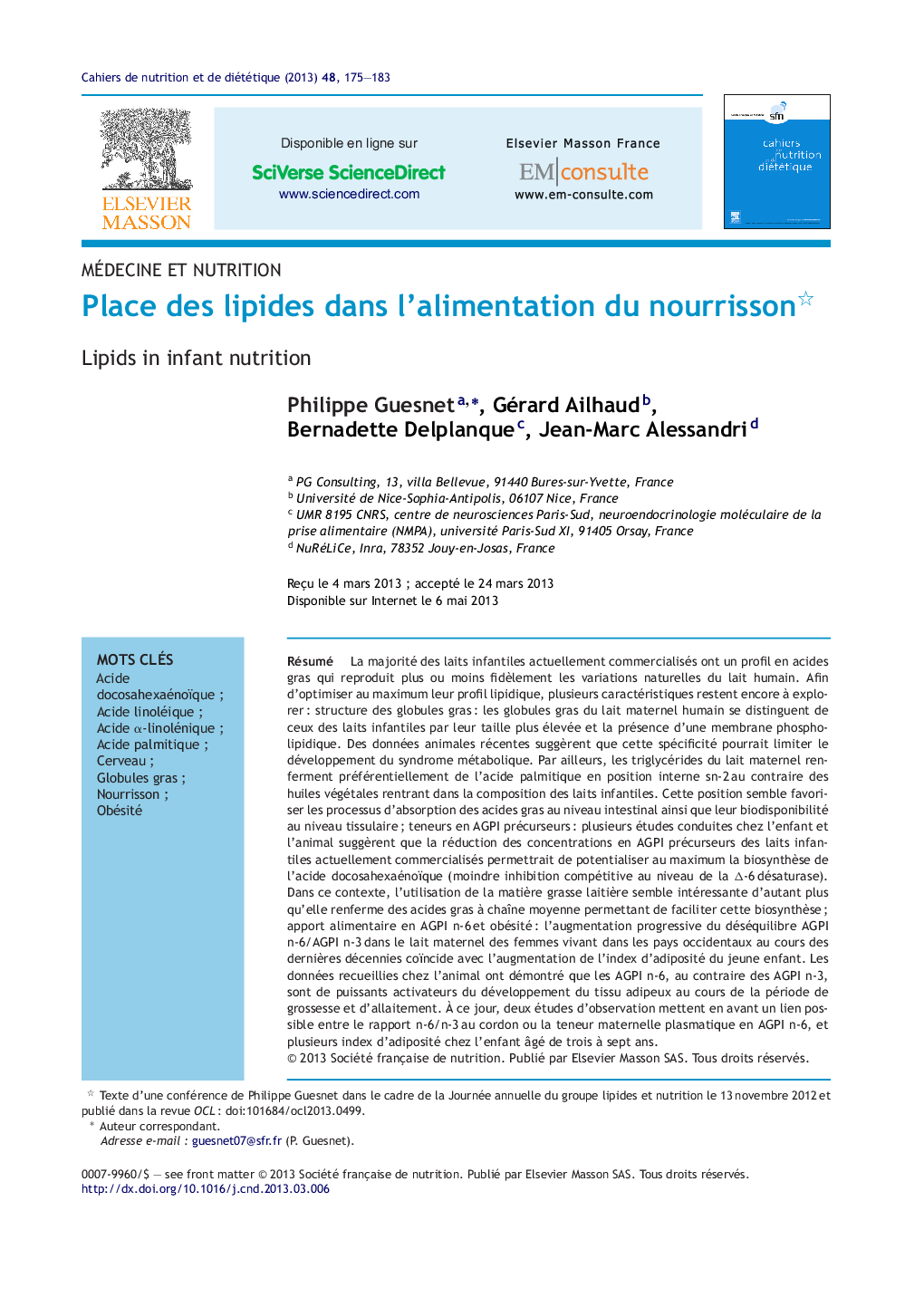| کد مقاله | کد نشریه | سال انتشار | مقاله انگلیسی | نسخه تمام متن |
|---|---|---|---|---|
| 2682035 | 1142480 | 2013 | 9 صفحه PDF | دانلود رایگان |
عنوان انگلیسی مقاله ISI
Place des lipides dans l'alimentation du nourrisson
دانلود مقاله + سفارش ترجمه
دانلود مقاله ISI انگلیسی
رایگان برای ایرانیان
کلمات کلیدی
موضوعات مرتبط
علوم پزشکی و سلامت
پزشکی و دندانپزشکی
غدد درون ریز، دیابت و متابولیسم
پیش نمایش صفحه اول مقاله

چکیده انگلیسی
The rapid growth of the neonate requires a high intake of both energy and lipids. Fatty acids may play an important role in the brain development and in the etiology of several disorders in children and adults. Most of infant formulas currently marketed have a fatty acid profile globally mimicking that of the “gold reference”, the human milk. However, several issues remain to be improved to optimizing their lipid status: structure of the fat globule: fat globules of human milk differ from those of infant formulas by their larger size and the presence of a phospholipid membrane. Recent experimental data in animal models of infant nutrition suggest that this specificity of natural milk may prevent the development of the metabolic syndrome. In addition, palmitic acid is mainly esterified in the sn-2 position of triglycerides in human milk, versus in the sn-1 and sn-3 positions in infant formulas. This sn-2 esterification may favor the intestinal absorption of other fatty acids and then their tissue bioavailability; PUFA metabolism: the exclusive use of vegetable oils in infant formulas has increased the content of both polyunsaturated fatty acid precursors (linoleic and α-linolenic acids). However, several studies have led to the observation that high PUFA contents in formulas may reduce the incorporation of docosahexaenoic acid in tissues; N-6 PUFA intake and obesity: in western countries, the increasing incidence of obesity has coincided with the gradual increase of n-6 PUFA from food and, incidentally, from an n-6/n-3 imbalance. Animal studies have recently shown that high linoleic acid intake and high ratio of linoleic to α-linolenic acids during the perinatal period activate the adipose tissue growth in the young and adult. To date, two observational studies confirm the existence of a link between the n-6/n-3 ratio in cord or the n-6 content in maternal plasma and adiposity in 3-7 years old infants.
ناشر
Database: Elsevier - ScienceDirect (ساینس دایرکت)
Journal: Cahiers de Nutrition et de Diététique - Volume 48, Issue 4, September 2013, Pages 175-183
Journal: Cahiers de Nutrition et de Diététique - Volume 48, Issue 4, September 2013, Pages 175-183
نویسندگان
Philippe Guesnet, Gérard Ailhaud, Bernadette Delplanque, Jean-Marc Alessandri,